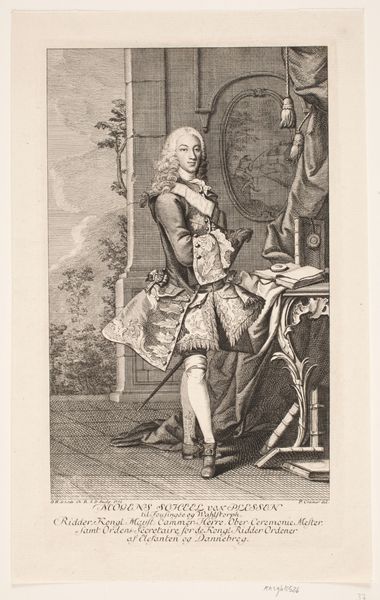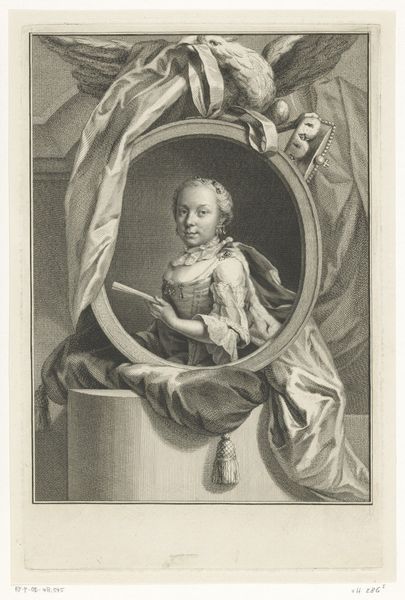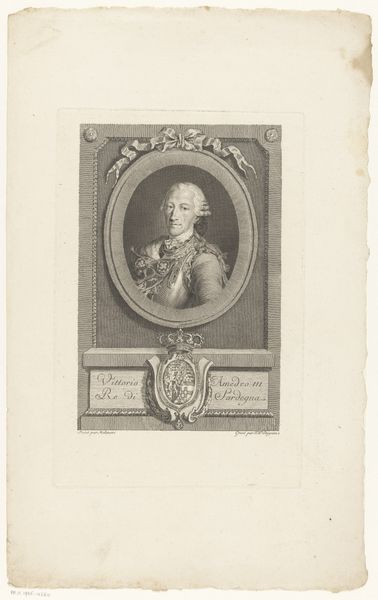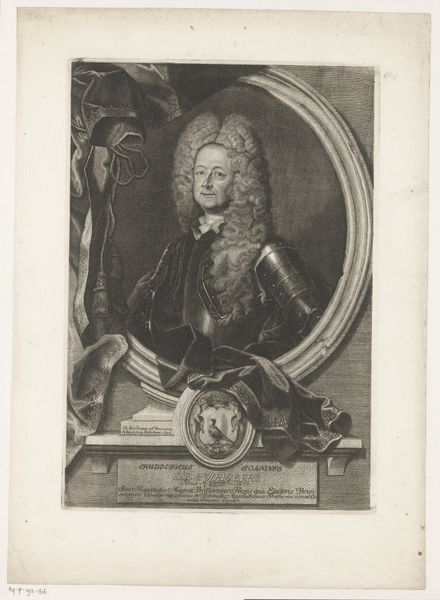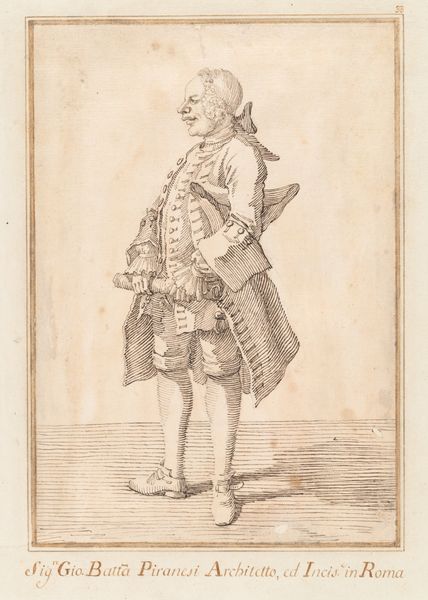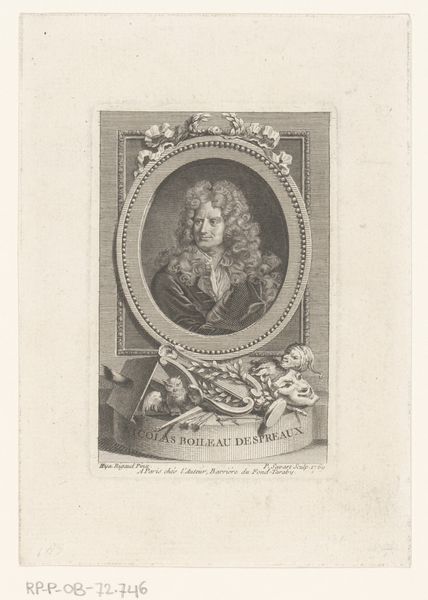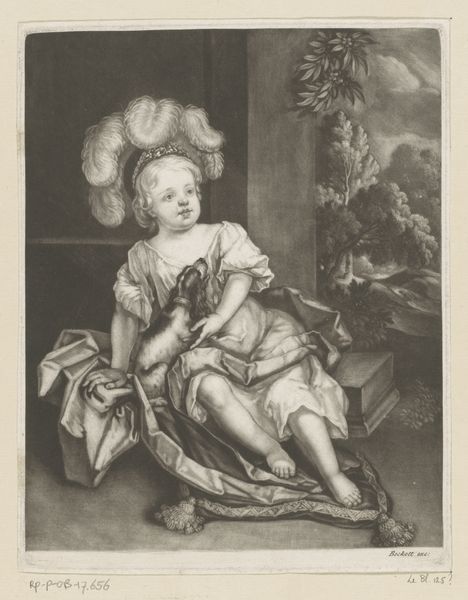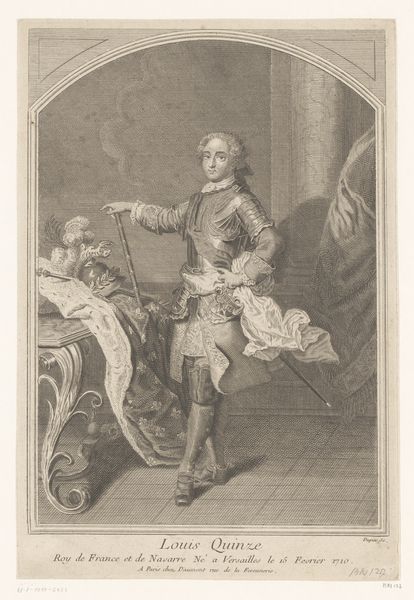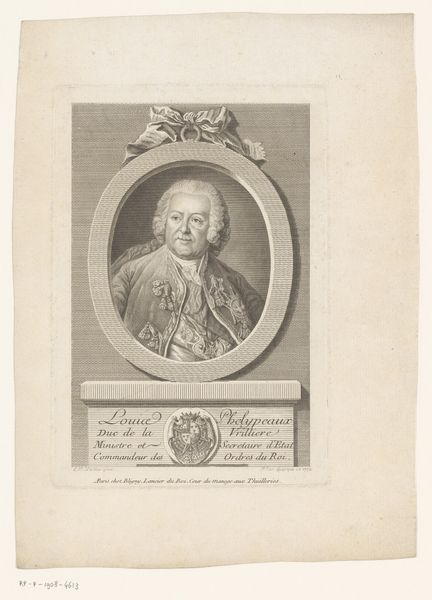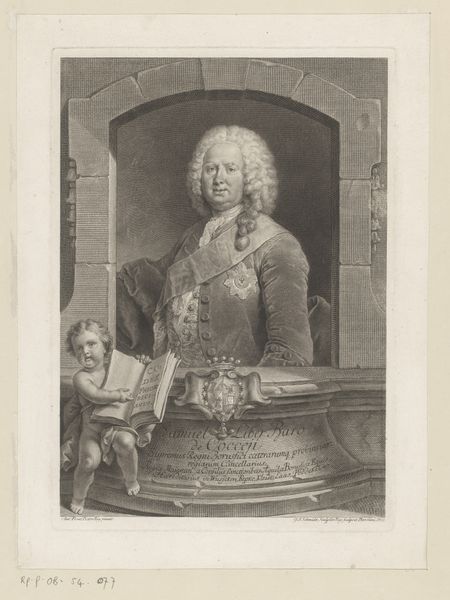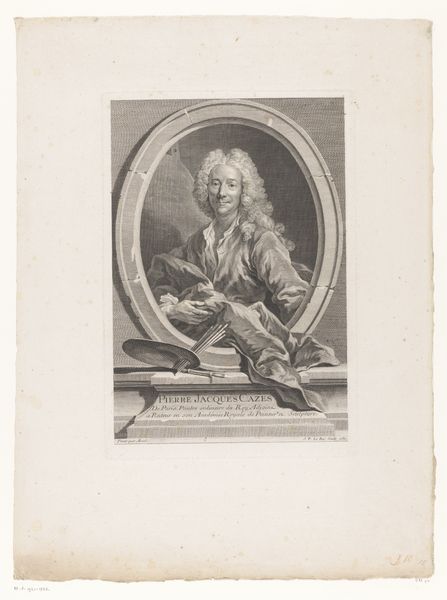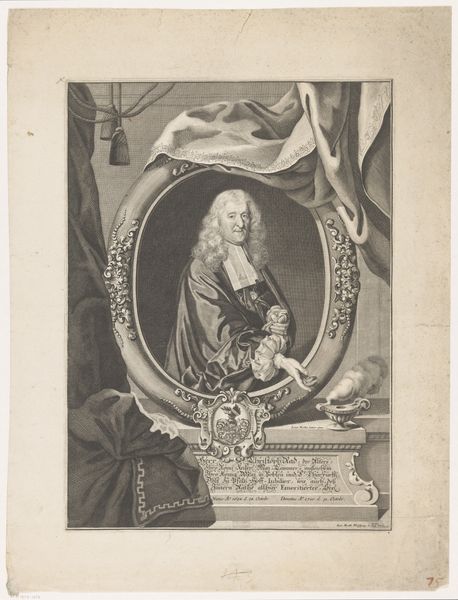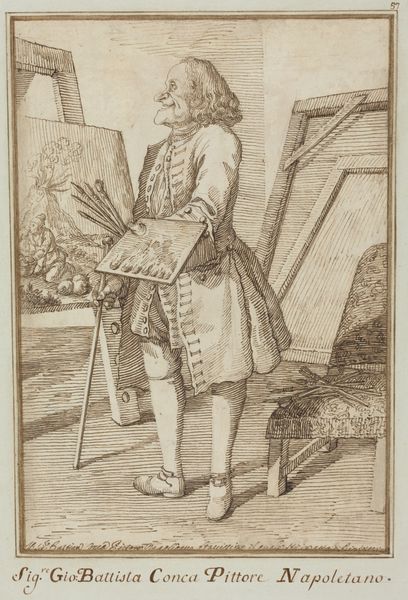
print, engraving
#
portrait
#
baroque
# print
#
engraving
Dimensions: 209 mm (height) x 131 mm (width) (plademaal)
Editor: Here we have Jonas Haas's engraving, "Christian Ludvig Scheel von Plessen," made sometime between 1720 and 1775. It has such a formal and almost staged quality, wouldn't you say? The lines are so precise. What do you see in its composition? Curator: Indeed. Let us examine its formal properties. Observe how the figure’s pose creates a diagonal axis, bisecting the composition. The globe and architectural elements on the right balance the softer, more organic shapes of the landscape to the left, yet how does the light contribute to this sense of balance, do you think? Editor: Well, the way the light catches his face and clothes pulls my eye to the left. I guess it mirrors the placement of the landscape, but the architecture seems so much heavier. Curator: Precisely. Now, consider the varying textures achieved through the engraving technique. Notice the fineness of lines used to render the face compared to the denser hatching that defines the shadows in the drapery and background. This creates a clear hierarchy of importance, does it not? Editor: Yes, his face is definitely the focal point, created by those incredibly fine lines! It’s interesting how the texture itself directs your eye. So, by carefully observing the composition and technique, we reveal so much about the intended meaning of this work. Curator: Exactly. Even seemingly simple stylistic choices, such as line thickness or directional strokes, become meaningful elements in constructing the overall image and the perception thereof. Editor: This has really changed how I look at engravings. Thanks, it's been quite informative!
Comments
No comments
Be the first to comment and join the conversation on the ultimate creative platform.
